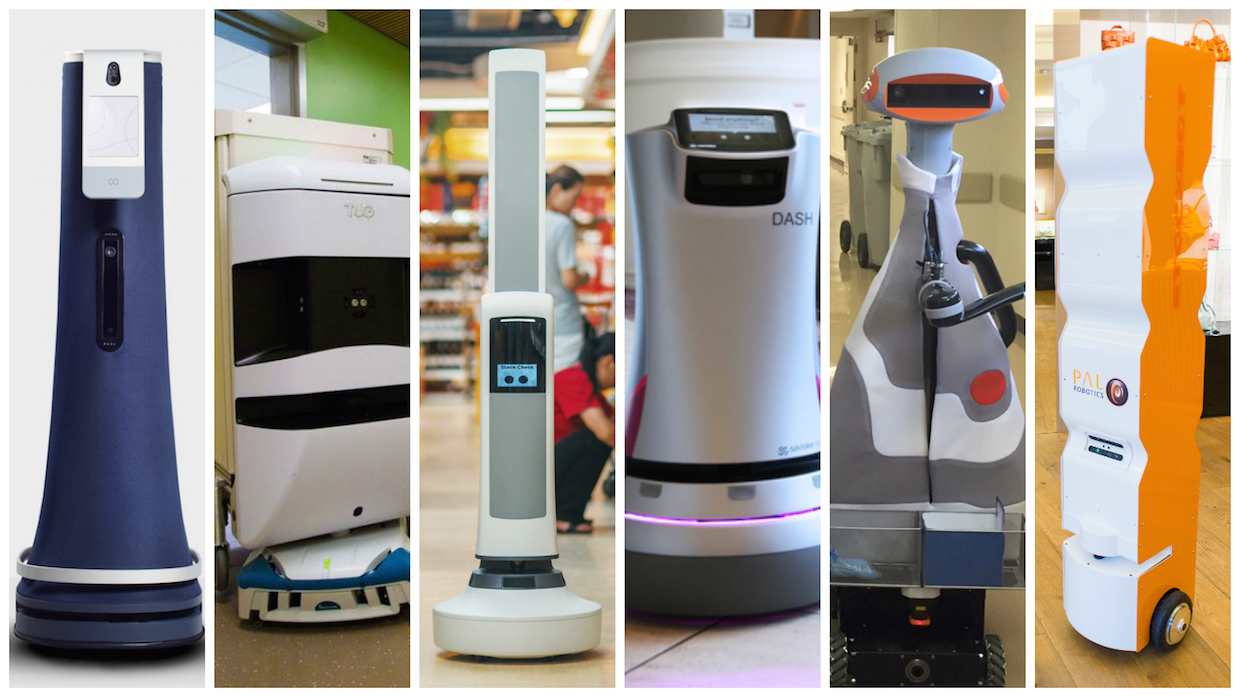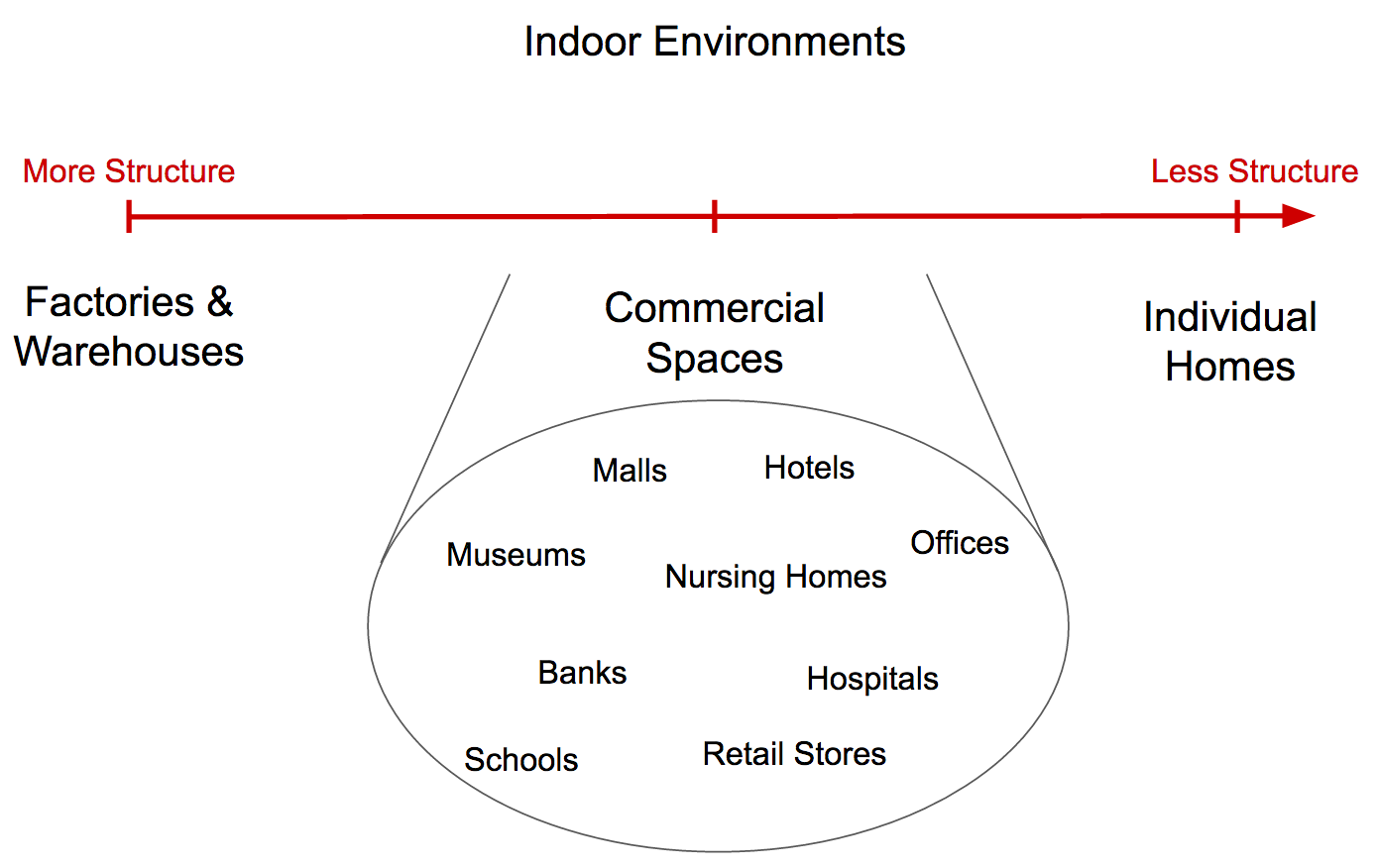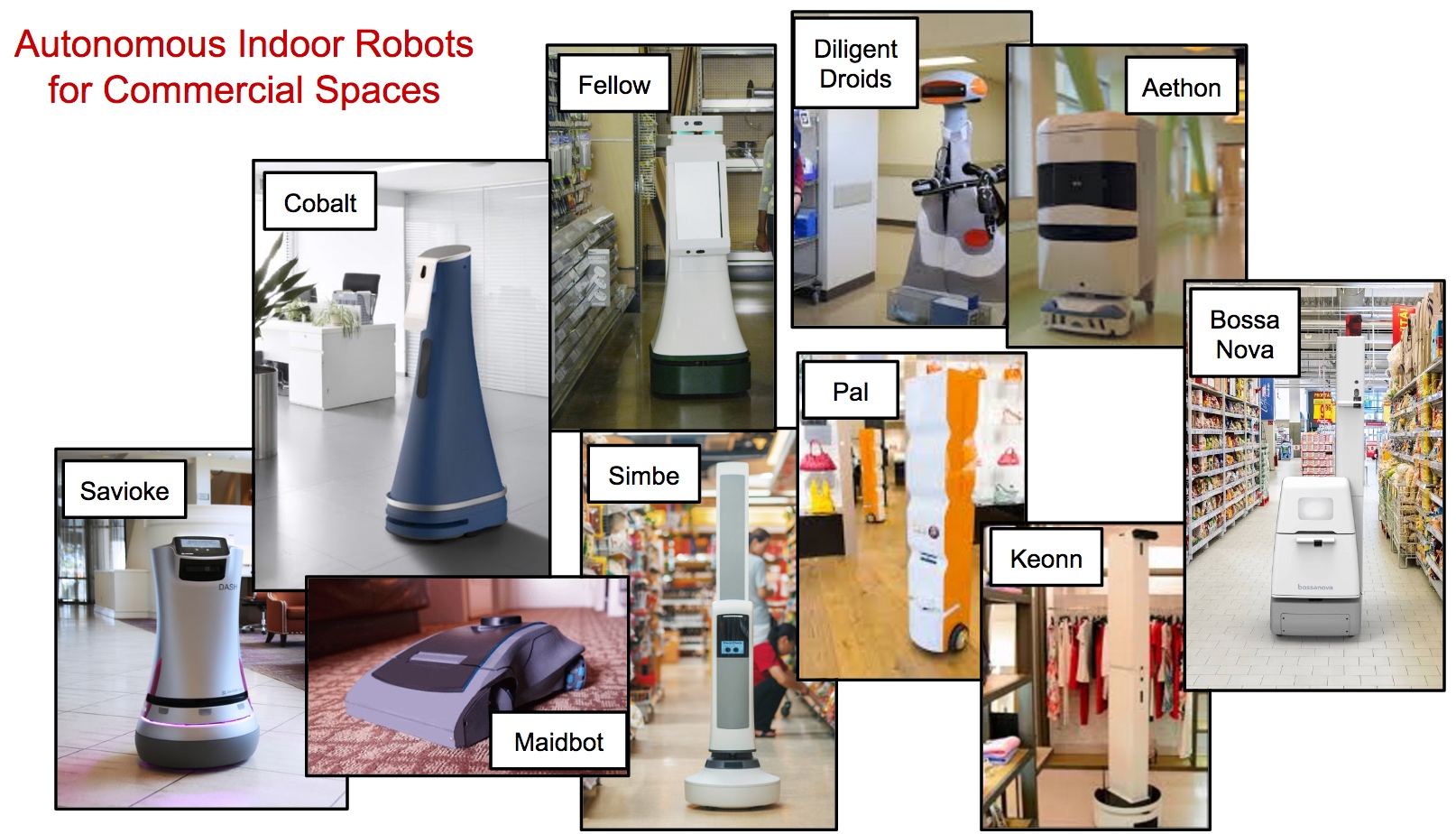Why should we expect a boom in the creation of robots for commercial premises

From left to right: Cobalt, Aethon, Simbe, Savioke, Diligent Droids, PAL Robotics.
Venture investments in robotics have grown more than 10 times in the last 6 years, and it is unlikely that this growth has slowed. Most of them focus on common areas: logistics, warehouse automation, industrial manipulators, medicine and surgical robots, drones, agriculture, and ro-mobiles.
But, when last year I launched my company Cobalt , I studied the robotics industry, and now I am sure that a new segment appears in it that promises to be the fastest growing of all: autonomous robots for commercial premises.

In 2016, investments in robotics amounted to $ 1.95 billion. Sources: 2011 , 2012 , 2013 , 2014 , 2015 , 2016
')
For many years, this area consisted of two parts: robots for the production or work with materials in factories and warehouses, and simple home robots. These parts are located on opposite parts of the spectrum of “structured premises”:

There are commercial premises between factories and households, such as supermarkets, hotels, museums, nursing homes, banks, schools, shops
In the past, robots in manufacturing and warehouses needed a clearly structured space — in fact, automation engineers adjusted the space for them and didn’t let people in, so that robots could perform repetitive tasks in relative isolation. With the development of flexible manipulation ( Rethink Robotics , Universal Robots ) and markup (Fetch Robotics), this situation is gradually changing.
In the part of the spectrum opposite to the structured spaces there is a house. Houses are extremely poorly structured and constantly changing. They can change at any time, and are very different from each other. Also in them you can meet a lot of people, both adults and children, pets, trash, stairs, unreliable communication. Of course, everyone would like to get a universal home robot that could keep it clean, wash it, feed it, etc. But it’s just as obvious that low-cost robots (Roomba) and toy robots are all home robots that are still available to us. Work hard at home!
But between these two ends of the spectrum there is a huge undeveloped market: hotels, hospitals, offices, shops, banks, schools, nursing homes, supermarkets, museums.
Commercial premises can be an excellent foundation for the development of universal home robots and serve to increase the scale, volume and capabilities. Commercial space has several advantages over residential:
1. Commercial premises and their enterprises make up a significant share of the economy. They have real problems and means to pay for their decisions. Robots designed for such premises may have real value. If you compare them with home robots competing for a limited budget, affordable for households, and often of vague value for consumers, it is easy to understand why commercial robots are breaking away.
2. Commercial premises are legally limited to certain requirements for such parameters as doorways, thresholds, ramps, elevators, walkways, signs - which greatly simplifies the work of engineers. If commercial premises are required to create all the conditions for movement in wheelchairs, then it is possible for them to develop suitable robots.
3. Most of the commercial premises have a reliable and predictable communications infrastructure (Wi-Fi and mobile communications), since it is necessary for normal operation. So, robots can maintain constant communication with the cloud or with the control center. And this point can not be underestimated: the last percentage of autonomy is the most difficult - just take a look at the robility ! By developing the possibility of episodic interference with the work of human robots, we provide support for their work while the algorithms and sensors are gradually improving.
And thanks to the above, recently there have been several projects of autonomous robots for commercial premises.

Cobalt (my company), a robot for security, concierge and office services; Savioke to act as a messenger in hotels; Maidbot for cleaning in hotels; Pal , Simbe , Bossa Nova and Keonn , inventory in stores; Fellow for concierge and analytics services in stores; Diligent Droids develop a nurse assistant; Aethon for delivery in hospitals.
The project of each of the companies can be compared with a robotic mobile, but made in a different form factor, with other advantages for other end users. While billions of dollars are spent on developing robotic vehicles in advanced research and development and large-scale production, the development of robots in new areas is reaping the benefits (technical advantages and cost savings) in terms of sensors, equipment, algorithms, machine learning, AI and open source software.
However, indoor robots also have their own problems. Unlike robo-mobiles, they have to interact with other people, being in close proximity to them, and seamlessly integrate into industrial enterprises. Because of this, the importance of such things as industrial design, human interaction with robots and psychology is increasing. Therefore, for companies operating in this segment, it becomes important to involve experts on all these issues as early as possible.
I look forward to the future of this market segment. These companies avoid the classic temptation of robotics to "create sex robots for the love of creating robots." Instead, they solve real and diversified problems for real customers. Most of the companies mentioned are already starting to ship their products to the market, so stay tuned. If my intuition does not deceive me, there will soon be a lot of such robots!
Source: https://habr.com/ru/post/402385/
All Articles